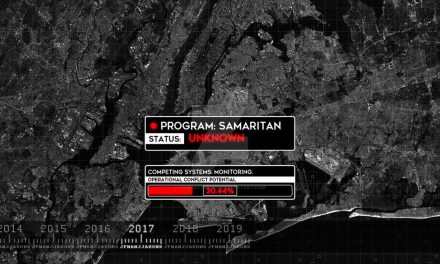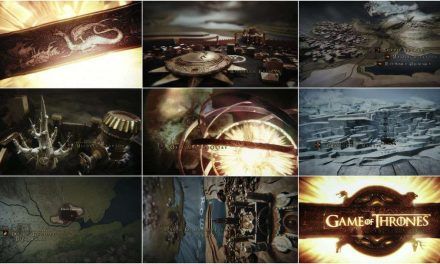Editors : Léa Dreyer, Evgenii Kozlov, Pierre-Jacques Pernuit, Clara Royer, Anne-Katrin Weber
In 1924, the “Jenkins Picture-Strip Machine,” a wireless-photography transmission device invented by the U.S. television pioneer Charles Jenkins, was used as part of an ambitious astronomy experiment. On August 21, the closest the planet Mars had been to Earth in eight years, all U.S. radio stations were asked to pause their broadcasts for five minutes in anticipation of the pick-up of possible Martian signals. The Jenkins Machine recorded onto film on this occasion a series of dots and dashes: traces of radio waves that weren’t sent by any Martian creature but were in fact a manifestation of the natural phenomenon known as “cosmic noise.” At the peak of the interwar “communications euphoria,” such “radio vision” fostered “an aesthetic of the [electromagnetic] signal” (Gethmann, 2013, p.75). This example is a telling case of the cultural reception of the profound epistemic shift marked by the discovery of Hertzian waves and their rapid deployment in telecommunications, a process that began in the late nineteenth century with the development of wireless telegraphy and radio. Beyond the mere absence of cable, this shift brought about a new media paradigm with social, political, artistic, and philosophical resonances which have frequently been reassessed as new wireless technologies have emerged. For instance, the “wireless being” described by computer scientist Nicholas Negroponte in 2002 in response to the expansion of Wi-Fi (Negroponte, 2002) echoed and updated the “new and astonishing world” of wireless technologies described by William Crookes as early as 1892 (Crookes, 1892 p. 174).
Expanding the scope of the international conference Tele-Visions: Technologies of Ubiquity in Visuals Arts held in Paris on October 3 and 4, 2023, this issue of VIEW Journal of European Television History and Culture invites inquiries into the discourses and practices of tele-visions reflecting a shift toward a wireless epistémè. Beyond the medium of television itself, the plural “tele-visions” refers to the variety of remote viewing technologies and image transmission techniques, from radar to satellite and up to Wi-Fi, which have configured new models for the circulation and transmission of visual contents. At the crossroads of art history, media studies and STS—including, but not limited to, visual studies, broadcasting studies, radio studies and sound studies—as well as in echoes of recent inquiries into the circulation and transportation of images (Jenkins, Ford and Green 2018, Mostakova, 2021, Feitved, 2013) contributors to this issue are invited to explore the electromagnetic dimension of tele-vision technologies1. Throughout the last 10 years, this discipline-cum-methodology branched out into various disciplines, fostering a hybridization that challenges the common conceptions held in the fields of humanity and histories of technology (Galili & Huhtamo 2020). Echoes of this new academic pursuit have been felt in the realm of television studies and have prompted detailed rereading of the history of the medium as well as excavation of its unexpected aspects (Galili, 2020, Weber 2022), as evidenced by the 2015 issue of View “TV Archeologies” edited by Andreas Fickers and Anne-Katrin Weber (Fickers and Weber, 2015). Following up on these recent research endeavors, we encourage contributions from authors with different expertise and interests in “tele-vision,” alongside (but not limited to) the following themes:
1 — SPECTRAL IMAGINARIES
We invite scholars to draw on the “imaginary media” (Kluitenberg, 2006) that have anticipated and shaped the very idea of wireless tele-vision. Well into the interwar period, multiple models for understanding electromagnetism coexisted in popular conceptions. Reflections on the ether that have accompanied the birth of abstraction throughout what scholars have called “vibratory modernism” (Henderson, 2002; Enns, Trower, 2013), have influenced the work of the historical avant-gardes as early as Kupka’s turn-of-the-century dreams of a “telepathic” painting. Further on, planetary and cosmic aspirations have found expression through cultural conceptions such as Gene Youngblood’s videosphere (Youngblood, 1970), that in part designates the electromagnetic paradigm of tele-vision.
This issue also welcomes papers discussing the cultural intersections of parasciences and the electromagnetic spectrum as well as the cultural histories of “electronic presence” and “technical delusion” (Sconce, 2000; 2019). We believe that the fantasies of a shared electromagnetic space that inhabit the imaginaries of the radiophonic, televisual and computer wireless networks and communities can help to outline an electromagnetic archeology of tele-vision.
Sound studies have already invited media studies to reconsider the electromagnetic spectrum in its sensorial, aesthetic and social implications. Inclusive and transversal understandings of electromagnetic energy fields, ranging from visible light to radiowaves, have given rise to transductive regimes that have sparked what scholars have called “signal plenitude” and “panaurality” (Kahn, 1999; Kahn, 2014). We therefore welcome papers exploring the productive intersection of sound studies and visual culture, renewing approaches to tele-visions through accounts of energies of “abiotic” origin.
2 — SEEING BY FREQUENCIES: FROM THE INTERFACES TO THE INFRASTRUCTURES OF THE WIRELESS
The wireless or Hertzian turn has marked an important shift in the long history of remote vision techniques. If the optical vision has always been connected to the human eye, increasing its reach by ever-evolving prosthetic devices, the wireless is part of a modern reconfiguration of the vision now organized both as transmission and visualization: it brings closer what is far away through the transportation of images and signs, and embraces into the field of vision what was excluded from it.
This expanded field of visibility opens up to physical realities that are accessible to the human eye only to the extent that an interface allows it: from the visualization of X-rays, generating its own visual culture (Natale, 2011), to the dynamic screens of radars as ingenious forms of real-time imaging (Geoghegan, 2019), the electromagnetic spectrum continuously produces traces intercepted, stored and translated into a variety of inscriptive and tele-visual media. These artifacts possess not only technical and scientific significance but also carry cultural and artistic implications. Indeed, the electromagnetic spectrum itself could be transformed into a source from which new artistic forms may be derived or even intercepted, as exemplified by the works of Swedish artist Lars Fredrikson (1926–1997) and within the broader context of telematic art. We welcome papers exploring this direction not only within visual arts and cultures but also extending far beyond, encompassing the vast realm of remote-seeing practices envisioned here as material practices.
Though frequently associated with the immaterial and the invisible, putting forward the very absence of cables, the wireless relies on an extensive communication infrastructure (Starosielski, 2015), often relegated into the background, either through the proliferation of interfaces, or through strategies of concealment or even camouflage (Parks, 2009). However, as evidenced by the recent scholarly interest in the logistical and infrastructural media, rendering devices (interfaces) are not conceivable without capturing devices (antennas and sensors broadly defined), as well as infrastructures connecting the former and the latter together. We encourage submissions that explore and shed light on this infrastructural dimension of remote viewing practices.
3 — NAVIGATING ELECTROMAGNETIC TERRITORIES
This third track invites scholars to delve into the intricate interplay between the territorial nature of electromagnetic waves and the geopolitical forces that inform their trajectories. As they cross territories, waves bring with them a tapestry of geographic, political, and environmental issues. Each country establishes its own set of rules and standards governing their use, resulting in a patchwork of broadcasting standards across different geographic territories. As a result, the electromagnetic spectrum reflects a complex web of international relations, trade agreements, national policies, and techno-diplomatic negotiations (Balbi and Fickers, 2020).
We encourage papers that scrutinize the intricate dynamics of “electromagnetic politics,” ranging from the regulatory allocation of frequency spectra to the subversive realms of hacking, resistance, diversion, and pirate radio, including deliberate disruptions or control of signals. This may include reflections on cultural diplomacy during the Cold War, postcolonial approaches in the context of the Non-Aligned Movement, as well as insights into the global governance of space-related technologies, including satellites and their footprints (Parks, 2005; Slotten, 2022).
As the environmental turn of media studies reminds us (Horn, 2018; Peters, 2015), elements are the primary carriers of media and it is crucial to recognize nature as the backdrop of wireless technologies. The topography of the Earth is a critical factor influencing the transmission of electromagnetic signals. Mountains, bodies of water, and atmospheric conditions present challenges that necessitate technological adaptations. We invite inquiries into waves as natural resources, prompting an examination of anthropic influence on the geopolitical dynamics of mediated spaces.
1 On the topic of the circulation of images, see the recent Symposium “Transporting Images,” an “Economies of Aesthetics” Symposium held at Brown University on October 20, 2024 and convened by Peter Szendy.
***
Paper proposals (max. 500 words) are due on June 15, 2024. Submissions should be sent to journal@euscreen.eu. A notice of acceptance will be sent to authors early July 2024.
Articles (between 3,000 – 6,000 words) will be due on December 31, 2024. Longer articles are welcome, provided that they comply with the journal’s author guidelines (https://viewjournal.eu/about/submissions/).
All articles will be peer-reviewed.
For further information or questions about the issue, please contact the co-editors at imago.tele.visions@gmail.com.
BIBLIOGRAPHY
Gabriele Balbi and Simone Natale, “The Double Birth of Wireless: Italian Radio Amateurs and the Interpretative Flexibility of New Media,” Journal of Radio & Audio Media, 22-1, 2015, pp. 26‑41.
Gabriele Balbi and Andreas Fickers, History of the International Telecommunication Union (ITU): Transnational techno-diplomacy from the telegraph to the Internet, Berlin and Boston: De Gruyter, 2020.
William Crookes, “Some Possibilities of Electricity,” Fortnightly Review, February 1, 1892, pp. 174-176.
Judd A. Case, “Logistical Media: Fragments from Radar’s Prehistory,” Canadian Journal of Communication, 38-3, 2013, pp. 379‑396.
Sophie Duplaix, “Om, Ohm ; ou les avatars de la Musique des sphères. Du rêve à la rêverie, de l’extase à la dépression,” in Sophie Duplaix and Marcella Lista (eds.), Sons & Lumières : une histoire du son dans l’art du XXème siècle, Paris: Centre Georges Pompidou, 2004, pp. 91-101.
Anthony Enns and Shelley Trower (eds.), Vibratory Modernism, Houndmills, Basingstoke, Hampshire (UK) and New York: Palgrave Macmillan, 2013.
Wolfgang Ernst, Sonic Time Machines: Explicit Sound, Sirenic Voices, and Implicit Sonicity, Amsterdam: Amsterdam University Press, 2016.
Arlid Fetveit, “The Ubiquity of Photography,” Throughout: Art and Culture Emerging with Ubiquitous Computing, edited by Ulrik Ekman, 89–102. Cambridge, MA: MIT Press, 2013.
Andreas Fickers, “Visibly Audible: The Radio Dial as Mediating Interface,” in Trevor Pinch and Karin Bijsterveld (eds.), The Oxford Handbook of Sound Studies, New York: Oxford University Press, 2012, pp. 411–39.
Andreas Fickers et Anne-Katrin Weber, « Editorial: Towards an Archaeology of Television », 4-7, 2015 <https://viewjournal.eu/articles/10.18146/2213-0969.2015.jethc076>.
Doron Galili, Seeing by electricity: cinema, moving image transmission, and the emergence of television, 1878-1939, Durham, Duke University Press, 2020.
Bernard Dionysius Geoghegan, “An Ecology of Operations: Vigilance, Radar, and the Birth of the Computer Screen,” Representations, 147-1, 2019, pp. 59‑95.
Daniel Gethmann, “The Aesthetics of the Signal: Noise Research in Long-Wave Radio Communications,” Osiris, 28-1, 2013, pp. 64‑79.
Linda Dalrymple Henderson, “Vibratory Modernism: Boccioni, Kupka, and the Ether of Space,” in Linda Dalrymple Henderson and Bruce Clarke, From Energy to Information. Representation in Science and Technology, Art, and Literature, Stanford (California): Stanford University Press, 2002, pp. 126‑49.
Erkki Huhtamo et Doron Galili, “The pasts and prospects of media archaeology”, Early Popular Visual Culture, 18-4, 2020, pp. 333‑339.
Eva Horn, “Air as Medium,” Grey Room, 73, 2018, pp. 6‑25.
David Kaiser, How the Hippies Saved Physics: Science, Counterculture, and the Quantum Revival, New York: W. W. Norton & Company, 2012.
Douglas Kahn, Noise, Water, Meat: A History of Sound in the Arts, Cambridge (Mass.): The MIT Press, 1999.
— Earth Sound Earth Signal, Energies and Earth Magnitude in the Arts, Berkeley: University of California Press, 2013.
— (ed.), Energies in the Arts, Cambridge (Mass.): The MIT Press, 2019.
Henry Jenkins, Sam Ford, and Joshua Green, Spreadable Media: Creating Value and Meaning in Networked Culture, New York, New York University Press, 2018;
Eric Kluitenberg (ed.), The Book of Imaginary Media: Excavating the Dream of the Ultimate Communication Medium, Rotterdam: De Balie, NAi Publishers, 2006.
Adrian Mackenzie, Wirelessness: Radical Empiricism in Network Cultures, Cambridge (Mass.), The MIT Press, 2010.
Olga Moskatova (dir.), Images on the Move: materiality—networks—formats, Bielefeld, transcript, 2021.
Simone Natale, “The invisible made visible: X-Rays as Attraction and Visual Medium at the End of the Nineteenth Century,” Media History, 17-4, 2011, pp. 345‑58.
Nicholas Negroponte, “Being Wireless,” Wired, 10-10, 2002. Online: <https://wired.com/2002/10/wireless/> [consulted on 23/02/24].
Georges Roque, “Ce grand monde des vibrations qui est à la base de l’univers,” in Serge Lemoine and Pascal Rousseau (eds.), Aux origines de l’abstraction: 1800-1914, Paris: Réunion des musées nationaux, 2003, pp. 50-67.
Ned Rossiter, “Logistical Media Theory, the Politics of Time, and the Geopolitics of Automation,” in Matthew Hockenberry, Nicole Starosielski, and Susan Zieger (eds.), Assembly Codes: The Logistics of Media, Durham: Duke University Press, 2021, pp. 132–50.
Jenna Supp-Montgomerie, When the Medium Was the Mission: The Atlantic Telegraph and the Religious Origins of Network Culture, New York: NYU Press, 2021.
Lisa Parks, Cultures in Orbit: Satellites and the Televisual, Durham: Duke University Press, 2005.
— “Around the Antenna Tree: The Politics of Infrastructural Visibility, Flow,” February 2024. Online : < https://flowjournal.org/2009/03/around-the-antenna-tree-the-politics-of-infrastructural-visibilitylisa-parks-uc-santa-barbara/ > [consulted on 26/02/2024].
John Durham Peters, Florian Sprenger, and Christina Vagt (eds.), Action at a Distance, Lüneburg; Meson Press, 2020.
John Durham Peters, Speaking Into the Air: A History of the Idea of Communication, Chicago: University of Chicago Press, 1999.
— The Marvelous Clouds: Toward a Philosophy of Elemental Media, Chicago: University of Chicago Press, 2015.
Marc Raboy, Marconi: The Man Who Networked the World, New York: Oxford University Press, 2016.
Jeffrey Sconce, Haunted Media: Electronic Presence from Telegraphy to Television, Durham: Duke University Press, 2000.
— The Technical Delusion: Electronics, Power, Insanity, Durham: Duke University Press, 2019.
Hugh R. Slotten, Beyond Sputnik and the Space Race: The Origins of Global Satellite Communications, Baltimore: Johns Hopkins University Press, 2022.
Nicole Starosielski, Signal Traffic: Critical Studies of Media Infrastructures, Chicago: University of Illinois Press, 2015.
— The Undersea Network, Durham: Duke University Press, 2015.
— “The Elements of Media Studies,” Media+Environment, 1-1, 2019.
Ghislain Thibault, “Bolts and Waves: Representing Radio Signals,” Early Popular Visual Culture, 16-1, 2018, pp. 39‑56.
Gene Youngblood, Expanded Cinema, New York: Dutton, 1970.
Anne-Katrin Weber, Television before TV: New Media and Exhibition Culture in Europe and the USA, 1928-1939., S.l., Am Univ Press, 2022.
Woodruff Turner Sullivan, Cosmic noise: a History of Early Radio Astronomy, Cambridge (UK ) and New York: Cambridge University Press, 2009.





